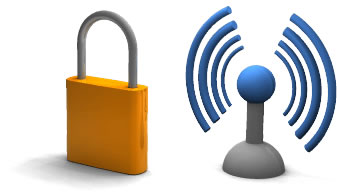More than a quarter of Internet users worldwide use WiFi at home to connect to the web, but many aren’t sure how to protect their home network, or why it is important to do so. The reason of not protecting wireless is that some don’t know about it, others just ignore it. There are some security tips that can be used to protect your wifi networks.
1. Change Default Password of your Wireless Routers:
Change the Administrative Password on your Wireless Routers. Each manufacturer ships their wireless routers with a default password for easy initial access. These passwords are easy to find on vendor support sites, and should therefore be changed immediately.
2. Replace WEP with WPA/WPA2:
WEP (Wired Equivalent Privacy) is a security protocol that was designed to provide a wireless computer network with a level of security and privacy comparable to what is usually expected of a wired computer network. WEP is a very weak form of security that uses common 60 or 108 bit key shared among all of the devices on the network to encrypt the wireless data. There are free tools available on the Internet that can crack a WEP key as little as 15 minutes. Once the WEP key is cracked, the network traffic instantly turns into clear text – making it easy for the hacker to treat the network like any open network. WPA (Wi-Fi Protected Access) is a powerful, standards-based, interoperable security technology for wireless computer networks. It provides strong data protection by using 128-bit encryption keys and dynamic session keys to ensure a wireless computer network’s privacy and security. Many cryptographers are confident that WPA addresses all the known attacks on WEP. It also adds strong user authentication, which was absent in WEP.
3. Create a strong password for your WiFi network.
To secure your wifi network, you’ll need to create a strong password with a long mix of numbers, letters and symbols so others can’t easily guess it. It will make your network password hard to crack.
3. Change the Default SSID Name:
Change the Default SSID Name and Turn Off SSID Broadcasting. This will require your wireless client computers to manually enter the name of your SSID (Service Set Identifier) before they can connect to your network. It can greatly minimize the damage from the casual user whose laptop is configured to connect to any available SSID broadcast it finds. You should also change the SSID name from the factory default, since these are just as well-known as the default passwords.
4. Disable DHCP:
Disable DHCP for a SOHO network with only a few computers, consider disabling DHCP (Dynamic Host Configuration Protocol) on your router and assigning IP addresses to your client computers manually. On newer wireless routers, you can even restrict access to the router to specific MAC addresses.

